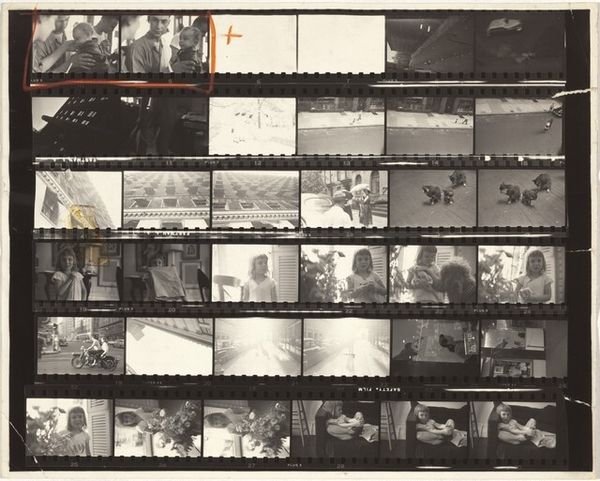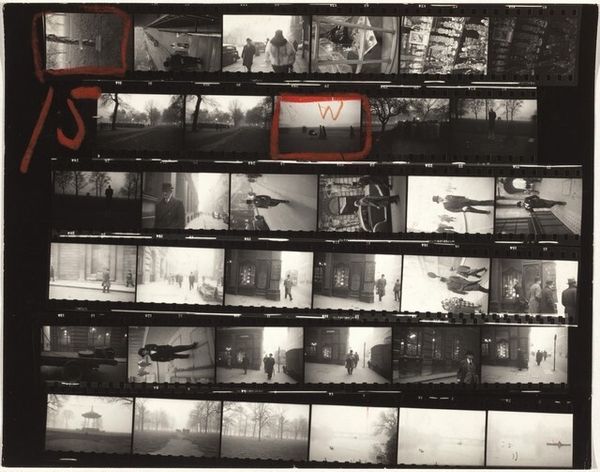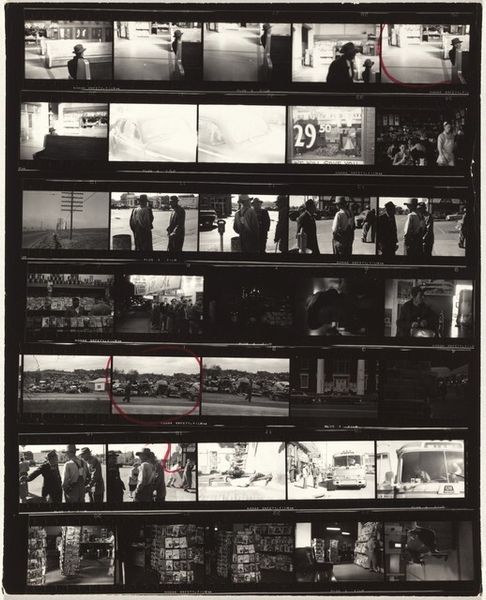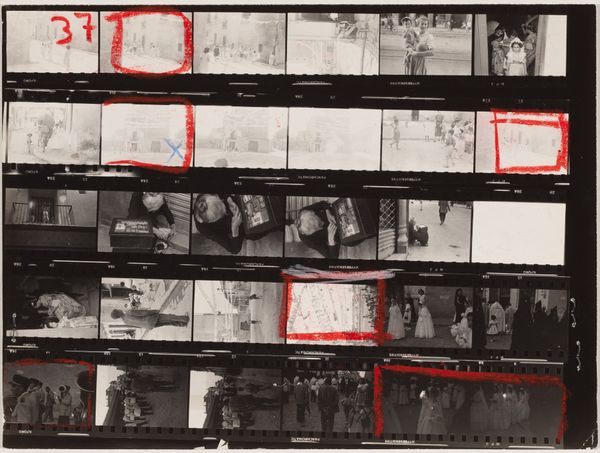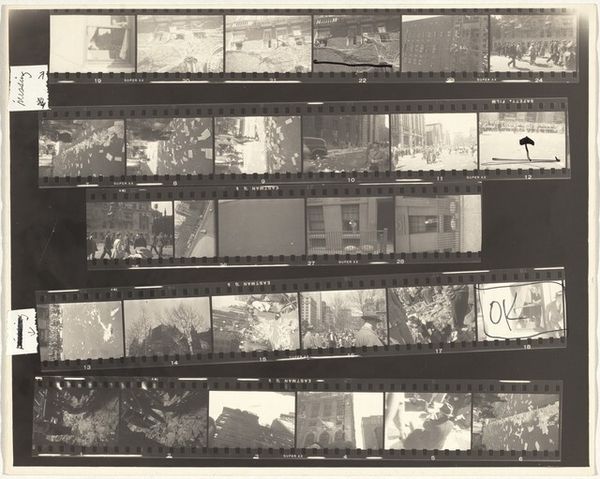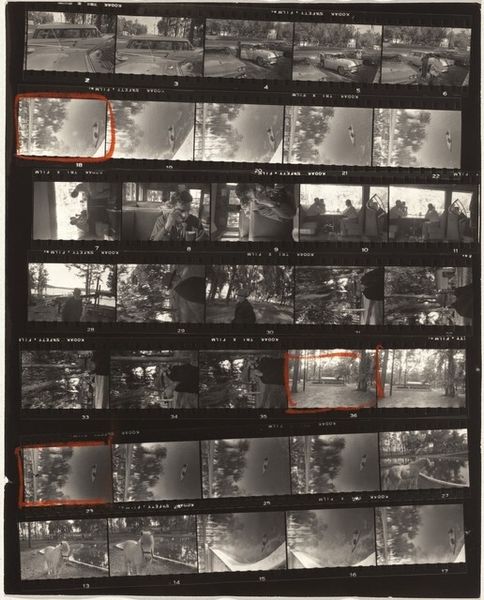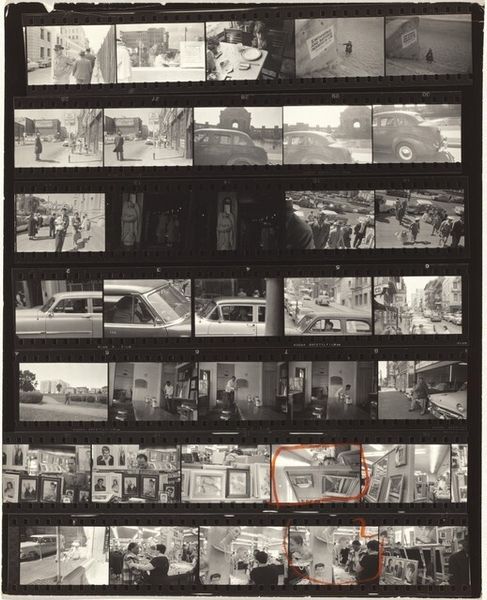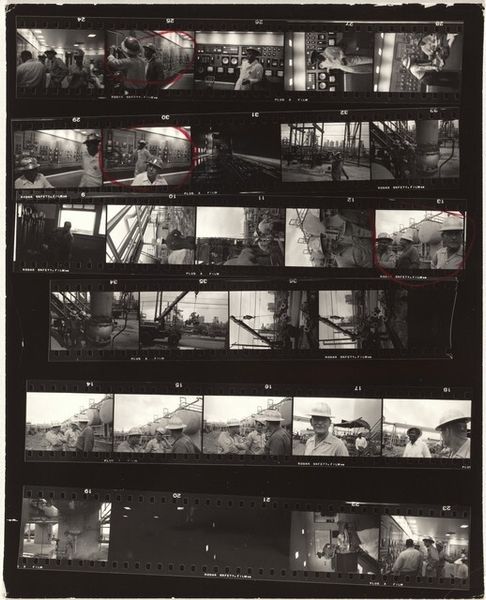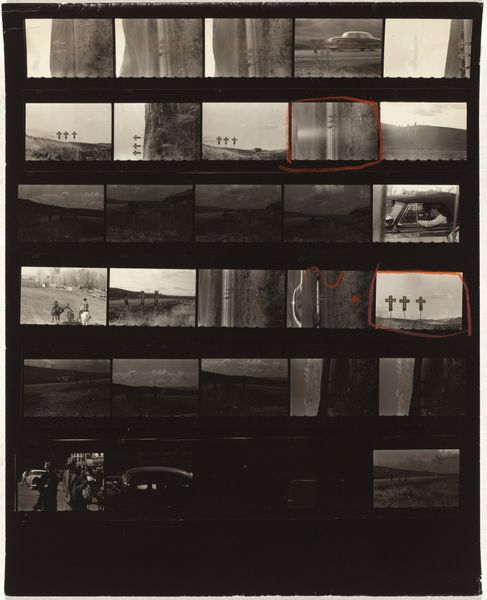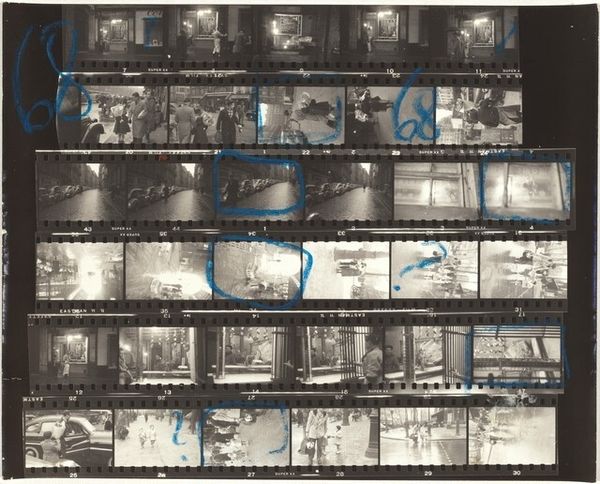
photography, gelatin-silver-print
#
film photography
#
landscape
#
archive photography
#
street-photography
#
photography
#
gelatin-silver-print
#
pop-art
#
cityscape
#
film
Dimensions: overall: 20.3 x 25.8 cm (8 x 10 3/16 in.)
Copyright: National Gallery of Art: CC0 1.0
Curator: Robert Frank’s "London 14," created between 1952 and 1953 using gelatin-silver print, presents a compelling study in contrasts. Editor: The immediate impression is a rhythmic visual structure of dark and light. The arrangement of the film strips evokes a feeling of fleeting moments captured. It looks like an urban diary made visible. Curator: Indeed, Frank challenges traditional notions of the singular, perfect image. Presenting the film strip itself emphasizes the photographic process and its reliance on mass production for both the film stock and the gelatin silver printing method. Editor: Absolutely. And Frank’s gestural red markings on the film are important formal elements, drawing our eyes and adding a disruptive tension against the monochrome grid of city views. Do you see how they emphasize the almost architectural qualities of the scenes presented? Curator: I see the marks as interventions that reflect a dialogue between the photographer and the city's workers. By marking specific frames, Frank is making choices during the selection and presentation of the final image. We might reflect upon the material conditions involved: the film stock itself and Frank's selection within the available range of choices when producing this street photography. Editor: But wouldn't you agree that by layering frames from the film, and the physical manipulation via the marks, he has introduced a sophisticated formalism, exploring seriality, repetition and subtle variation within a defined structure. Note how his process abstracts the essence of London into a series of almost ideographic, visually condensed experiences. Curator: That condensed experience speaks to the conditions of urban labor in the 1950s, especially the role of street-level observers such as Frank. What social purpose did his work serve as a reflection on contemporary society? Editor: You have a point. It almost reads like a material metaphor of that postwar moment. The photograph's form, particularly that fragmented feeling of city existence. Very interesting… Curator: Precisely. What the piece tells us of its time is an observation in itself, I think. Thank you for your perspective on it!
Comments
No comments
Be the first to comment and join the conversation on the ultimate creative platform.


